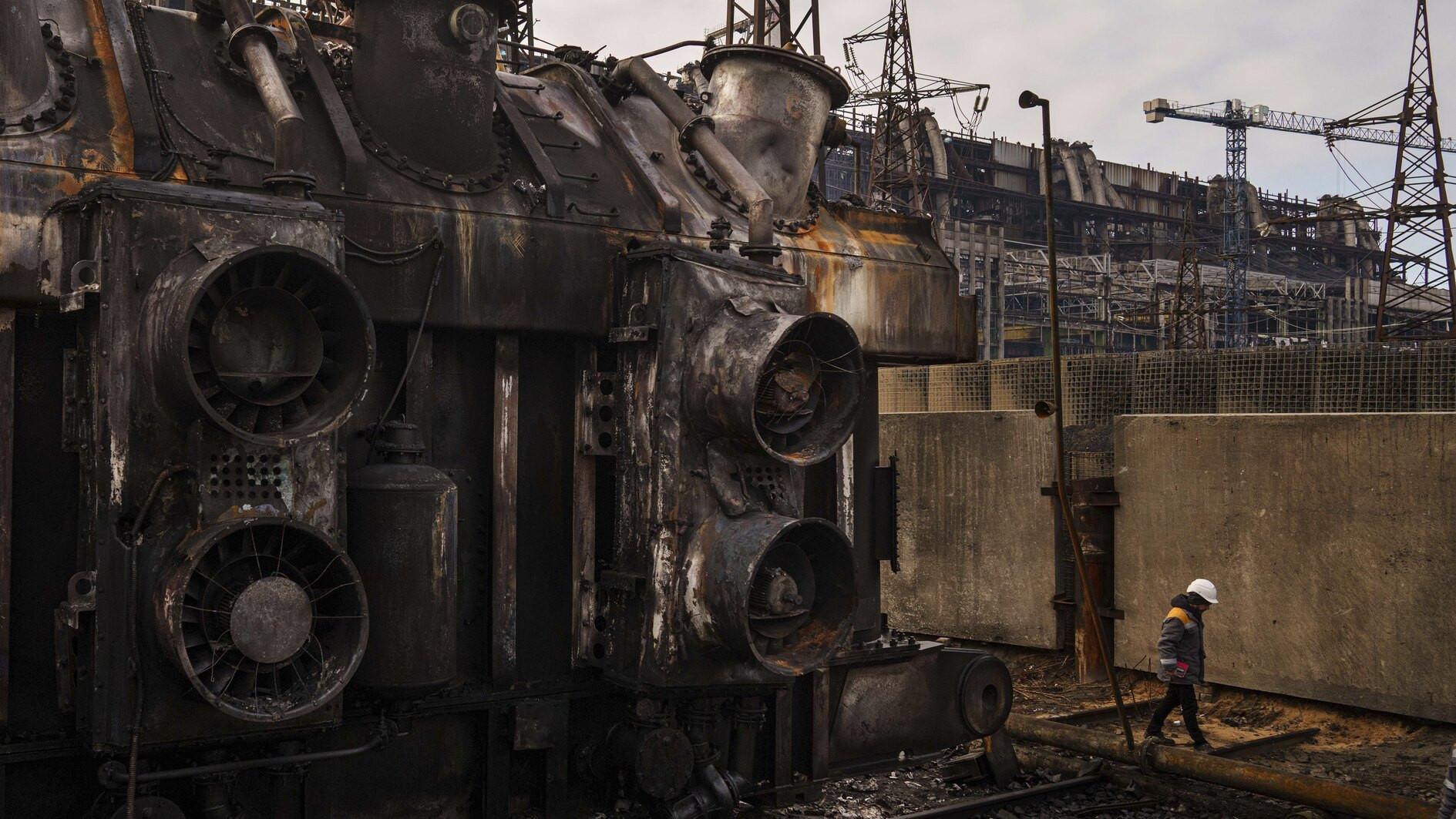
On a bright winter day, workers at a Ukrainian thermal power plant repair its heavily damaged equipment as drops of water from melted snow leak through gaping holes in its battered roof.
Several weeks earlier, the facility was targeted by a Russian air attack that left scorch marks, shrapnel scars on the walls and missile fragments scattered across the production floor.
“This is our life now. Workers at a thermal power plant that’s supposed to produce electricity are walking on frozen floors and using firewood to keep warm,” Oleksandr, 52, head of the Production Management Department, told The Associated Press. He spoke on condition that only his first name be used citing security concerns.
Repeated Russian strikes on infrastructure have seriously impacted Ukraine's energy sector often resulting in rolling blackouts across the country. On Nov. 28, Moscow launched another large-scale air attack. Ukrainian authorities said nearly 200 drones and missiles targeted infrastructure, disrupting power supply to more than 1 million people.
The scale of the ongoing work to fix the sector is huge. Since the start of Russia’s full-scale invasion in 2022, the G7 and other allied countries have allocated more than $4 billion in energy assistance to Ukraine, U.S. Secretary of State Antony Blinken said in September.
Oleksandr, who works at the power plant operated by Ukraine’s largest private energy company, DTEK, says since the station was first attacked in November 2022, it has been unable to return to full capacity due to continuous strikes that have left critical equipment in ruins.
DTEK operated around 20 percent of Ukraine’s electricity production before the full-scale invasion, but this figure dropped to 12 percent since the war broke out. The company says its facilities have been attacked by Russia almost 200 times since 2022. They also say nearly 90 percent of the company’s infrastructure was destroyed or suffered damage and that was before Russia launched its large-scale attack on Nov. 17.
Oleksandr says he expects repairs at the station to continue through the winter into next year, and potentially far beyond. Repair efforts at the plant are further complicated by the fact that some critical equipment was manufactured in the Soviet Union and finding parts is now difficult. To mitigate this, some former Soviet countries who are now Ukraine’s allies have helped supply equipment.
“Potentially, Western countries could also help us with equipment, but their power grids have different characteristics,” Oleksandr said.
Only half of DTEK’s generating capacities have been restored since the first attacks on its plants in November 2022 until the latest large-scale strike. Earlier this week, the European Commission and the U.S. government announced a donation of $112 million in equipment and construction materials to help DTEK prepare for the winter.